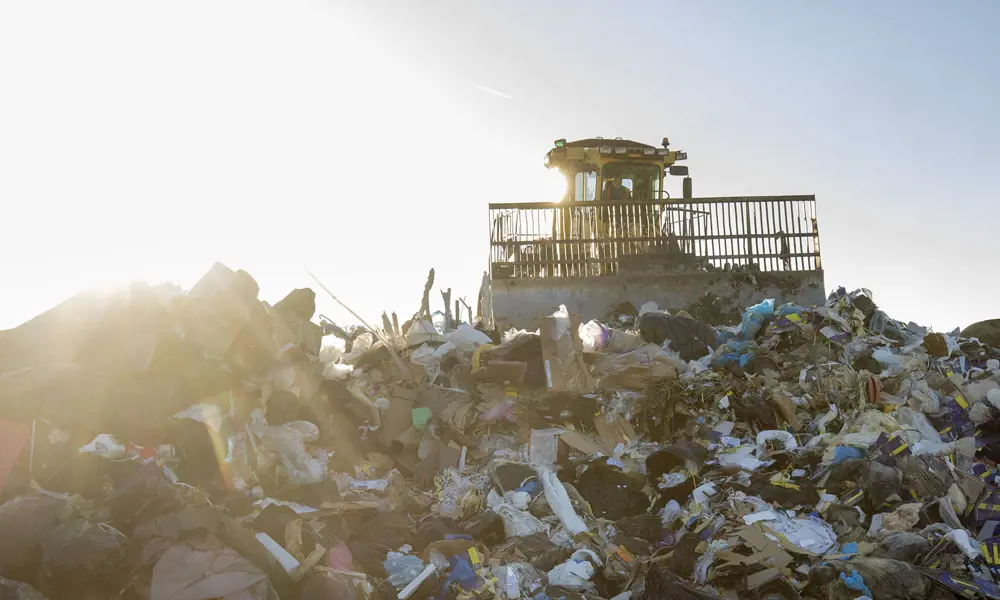
Life after landfills
The number of landfill sites in the UK is declining and there is a marked reluctance to create more. Ideally, everything that is manufactured could be broken down and reused after use. However, at the moment, after household waste has been sorted into recyclable and recoverable, the rest is sent to be buried.
It had been a long-held European Union (EU) target for all member states to achieve a recycling rate of 50% for its household waste. The UK currently achieves 45% and has made substantial progress since 2000, when it only managed 13% a year and consigned huge amounts to landfill.
The 1999 EU Landfill Directive came with financial penalties and the UK government had been placing an escalating tax (currently just under £100 per tonne) on non-inert refuse put into the ground. As a result, local councils have been forced to look for alternative ways of disposing and reusing their residents’ refuse.
For the rubbish that can’t currently be recycled, councils have overwhelmingly turned to combustion to stop non-recyclable material being buried in the ground. In 2019, the UK’s 53 energy-from-waste plants generated 6,700 GWh (gigawatt hours), roughly 2% of the nation’s electricity generation, plus 1,400 GWh of heat.
In addition to more than 500 active landfill sites, there are more than 20,000 historic landfills that pre-date the millennium in the UK. Now, researchers and companies are looking at the feasibility of mining such sites in order to retrieve useful materials and make the land safe to reuse.
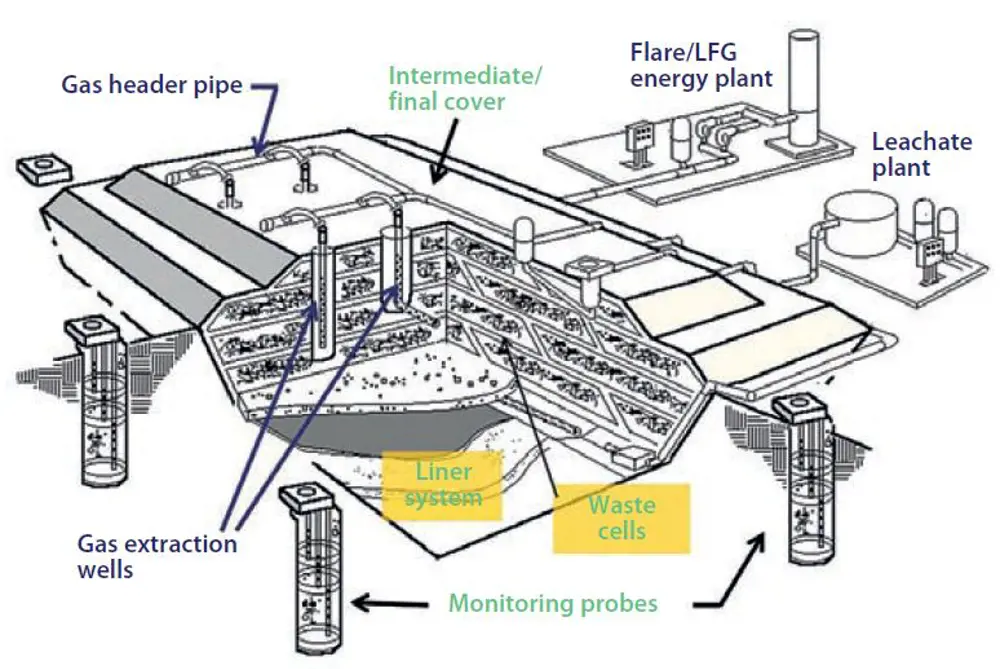
Landfill schematic showing gas and leachate collection systems © Wikimedia Commons
How are modern landfills managed?
The reduction in the amount sent to be buried in the UK has coincided with a marked improvement in the maintenance and safety of landfill sites. This has been in large part due to the Control of Pollution Act 1974. The act, and its review in 1978, helped bring an end to the notion of sites as tips and regulated their maintenance. Now, they are highly engineered, have an active life of 20 years or more, and can expect to be maintained for a further 50 years after they are decommissioned.
Dr Adam Read, working for SUEZ Recycling and Recovery UK, has studied the evolution of landfill. “In essence, the old pre-1974 sites were tips using a dispersion model that runs like this: If you bury rubbish in a big enough area it’ll leach, and with rainwater saturating such a large area then it won’t be a pollutant. That’s before people worked out that water runs downhill and ends up in your watercourse. Add to that the degrading of different materials at different rates, the varying moisture levels below ground, slippages in stacked rubbish, the pockets of methane gas collecting and sometimes exploding, then it became clear that things had to change.”
Today, most new landfills follow a similar pattern in their creation and maintenance. The overall site will be split into cells that measure around 10,000 m² (square metres) to 20,000 m². At the base of each will be a 60 cm (centimetre) layer of compacted clay soil topped with 6 cm-thick high-density polyethylene liner that also lines the sides. A gravel/stone leachate collection layer is placed over the liner that has perforated collection pipes that take the liquid to collection sumps. On top of this is a final layer of geotextile material that provides a separation of solid material from liquid.
Then cells are built up with waste from lorry loads of refuse. As layers of rubbish are built up they are covered with inert soils or matting that help prevent odours and keep vermin away. While these layers are built up, horizontally presented perforated gas collectors are laid in. These are generally ‘sacrificial’ in nature providing a short-term solution until more permanent retro-drilled gas wells are installed in a completed, or near completed, landfill cell – these will be made from low-density polyethylene measuring between 125 mm (millimetres) to 160 mm in diameter.
Both sets of pipes are connected to a site-wide gas collection system that leads to an onsite turbine house where the gas is converted to energy. In 2019, 3.6 TWh (terawatt hours) of electricity were generated from landfill gas. This was either used locally or fed to the National Grid.
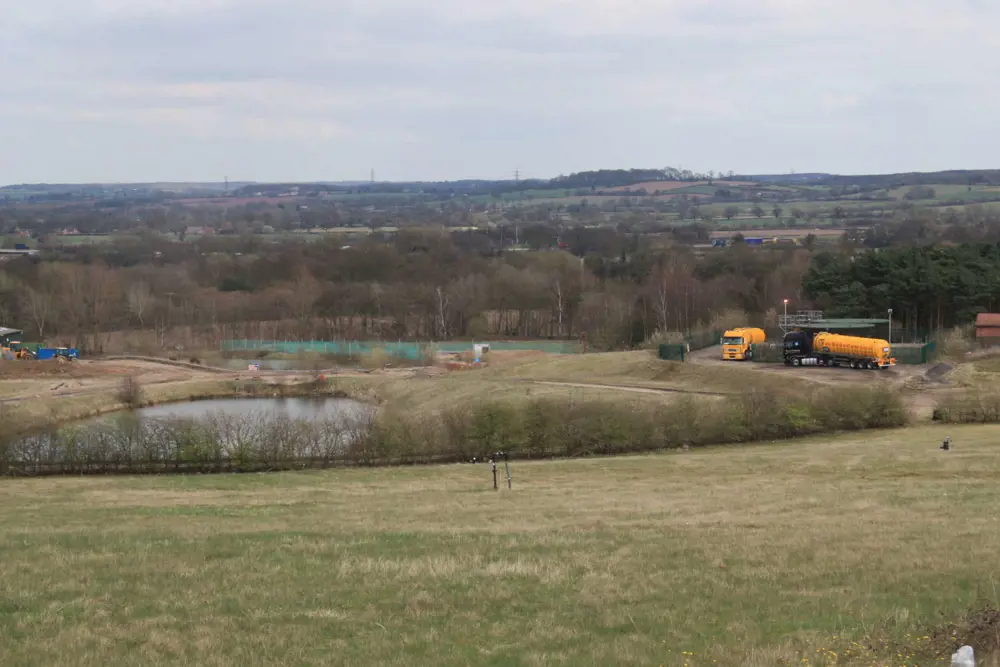
Packington landfill site is an example of landraising, rather than landfilling. It is 80 m tall, covers 380 acres and has taken rubbish from Birmingham and Warwickshire. In the foreground is the leachate tank farm. It is maintained by SUEZ Recycling and Recovery
The leachate sumps (wells) are connected to the surface of a filled landfill cell by vertical pipes or pipes laid on the side-slopes. Leachate is pumped to a treatment/disposal plant being treated onsite and discharged to a connected external sewage network or removed from site using road tankers to a sewage treatment plant.
When cells are full they are capped with compacted clay and a geomembrane. A protective cover soil is laid on top of these, then a top soil and finally cover vegetation. The aftercare for landfill sites includes checking the external gas monitoring boreholes, and managing gas flares, gas boosters and gas clean-up equipment, such as activated carbon systems. Monitoring the leachate wells, maintaining leachate-treatment plants, and checking external groundwater wells and surface water discharge points are necessary and continuous processes for decades after the landfill site is filled.
One landmark landfill site near Birmingham closed in 2015, after taking in over 21 million tonnes of waste in its lifetime. Packington landfill was the first site in the UK to produce electricity from landfill gas, starting in 1990. It is estimated that it will continue generating electricity for a further 20 years from the near-20 miles of pipework at more than 300 extraction points.
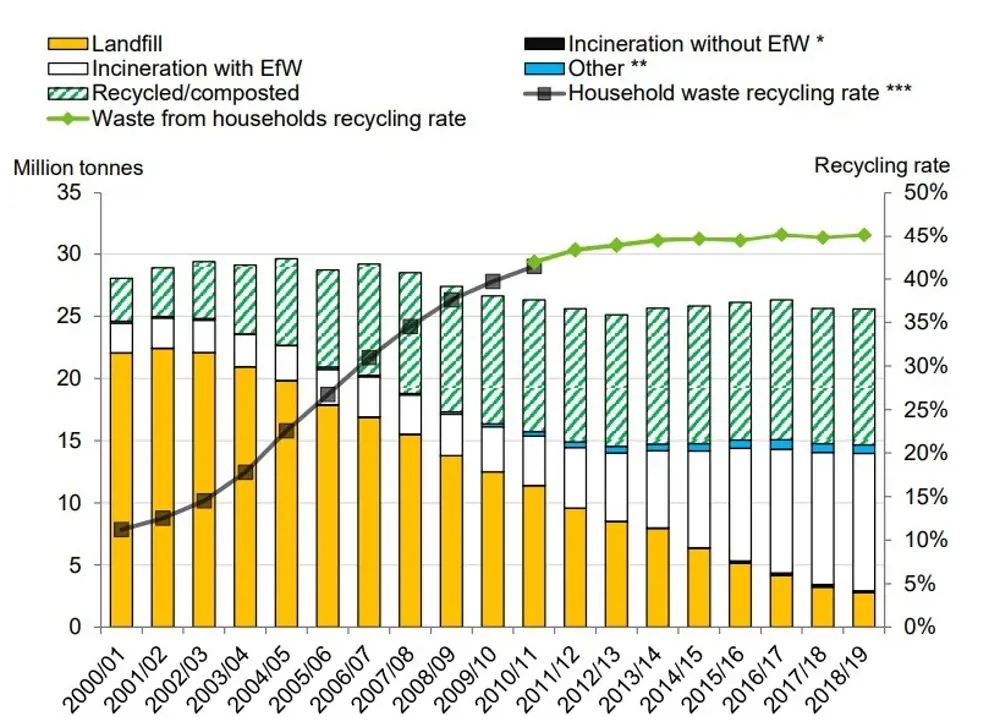
Management of local authority collected waste and recycling rates for England, 2000/01 to 2018/19 © Defra tinyurl.com/kmonhaz
Producing energy from waste
One of the major factors in the dramatic reduction of refuse sent to landfill over the last decade has been the increased use of energy-from-waste (EfW) plants – also known as energy recovery facilities. The 12 million tonnes processed by EfW plants in the UK represents 45% of the nation’s ‘residual waste’.
Residual waste is the non-hazardous refuse left over once the recycled and reusable materials have been taken out of the rubbish collected from homes. This waste is taken to one of the 53 EfW plants in the UK that burn waste and produce electricity. If the EfW is a combined heat and power plant, then it can produce heat to supply local homes and businesses as well.
Viridor’s 10 EfW plants process the most tonnage and, along with Veolia and SUEZ, take over half the UK’s residual waste. David Field, Director of Engineering – Energy at Viridor, says that: “France began developing EfW plants in the 1970s and 1980s on relatively small municipal sites that processed between 100 and 150,000 tonnes of waste a year. In the UK, a new plant will be much larger and usually have a baseline capacity of around 300,000 tonnes a year, with most using moving grate technology.”
EfW plants follow the same basic steps. There will be a reception area to receive the waste and get it ready for combustion, a thermal treatment that releases the energy from the rubbish and converts it to a transportable form of energy such as electricity or heat.
The process involves feeding the waste down a chute onto a moving grate and into a furnace where it combusts and releases its energy. The residual gases and by-products are held at temperatures over 850°C to ensure complete combustion before being passed into the boiler for energy recovery.
In the boiler, superheated steam is generated to achieve 400°C and around 45 bars of pressure. The heat energy becomes mechanical energy when the steam is used to drive a high-pressure turbine, the gear box turning a generator that produces between 20 to 35 MW (megawatts) of electricity.
The flue gases formed during the combustion process have an emissions clean up to ensure that the final released gases are safe. They are treated with hydrated lime and activated carbon to remove the acid gases and absorb heavy metals, dioxins, furans, and volatile organic compounds. These contaminants are removed as solid ash for further treatment. What is finally let out of an EfW stack will mainly be CO2 and water vapour.
The 12 million tonnes processed by EfW plants in the UK represents 45% of the nation’s ‘residual waste’
Incinerator bottom ash (IBA) is the name given to what is left on the floor after the combustion. Its weight is around 30% of the original waste and 10% of the original volume. When the IBA leaves the active part of the boiler it passes an overband (or drum) electromagnet that lifts out ferrous metals such as steel and iron.
The remaining IBA is passed by an eddy current separator that picks out the non-ferrous metals such as aluminium, copper and zinc alloys. Nearly 250,000 tonnes of IBA metal are recovered each year in the UK, amounting to nearly 1% of all recycled waste.
The remaining IBA consists of various elements including inert brick, rubble, glass, and ceramics. When this has been treated the majority is used for block making and aggregate. Nearly all IBA produced by EfWs is now recycled.
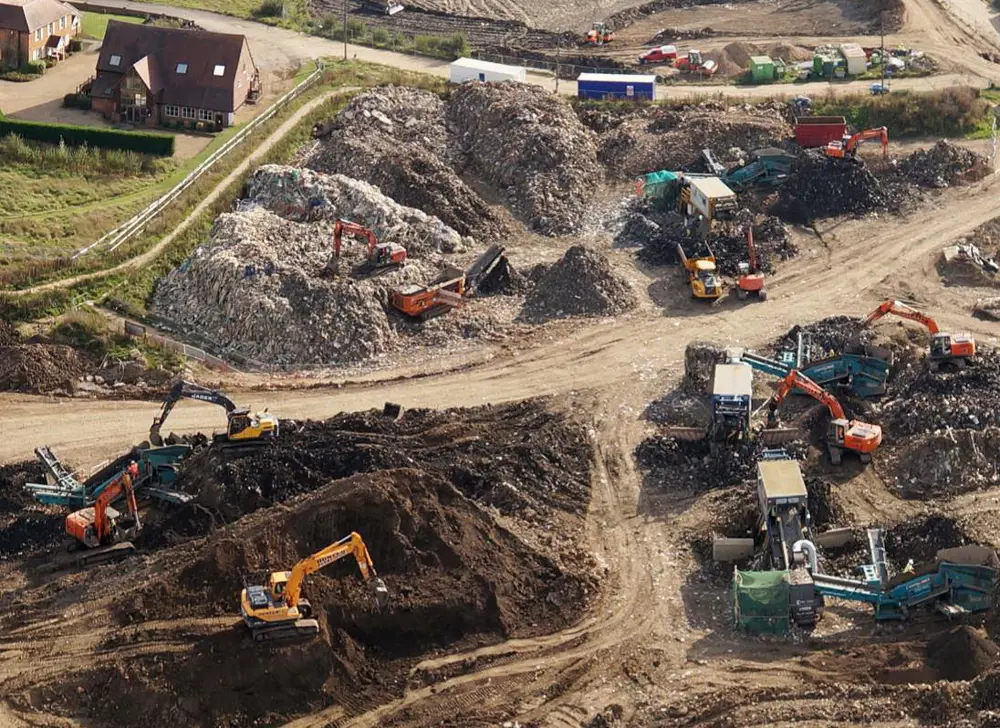
To clean up an old landfill site, VertaseFLI, specialists in contaminated land remediation, will sort through the buried rubbish to retrieve materials that can be recycled or recovered © VertaseFLI
Landfill mining as a resource
There are more than 20,000 closed and listed historic landfill sites in the UK with several hundred thousand more spread across Europe. Most can’t be seen and have been largely forgotten. Others are remembered when there is a need to repurpose the land – to construct new roads, build houses or schools.
Usually, when specialist companies take on the reclamation of landfills, the focus is on reducing the volume of waste and eliminating possible pollution. Typically they will be working on ‘dilute and disperse’ landfill sites, 3 or 4 metres deep, where no engineering was undertaken to manage the leachate and ground gas.
To make the works financially viable and render the area environmentally safe, there will often be a trawl to recover material that can be recovered and reused, as well as ensuring that gas and run-off water is controlled.
Around 10% of municipal sites consist of inorganics like concrete, stones, glass, and metal. The metals can be recycled and the rest used for construction materials. An onsite trommel, a perforated rotating drum, allows soil-type material (around 50 to 60% of landfill by weight) to fall out. It captures the inorganic material and the combustibles like plastic, paper and wood, which can be used to generate energy.
The ELFM model is not just about reclaiming land – ‘traditional’ landfill mining – it is about recovering materials and energy and ensuring that there is no long-term environmental damage
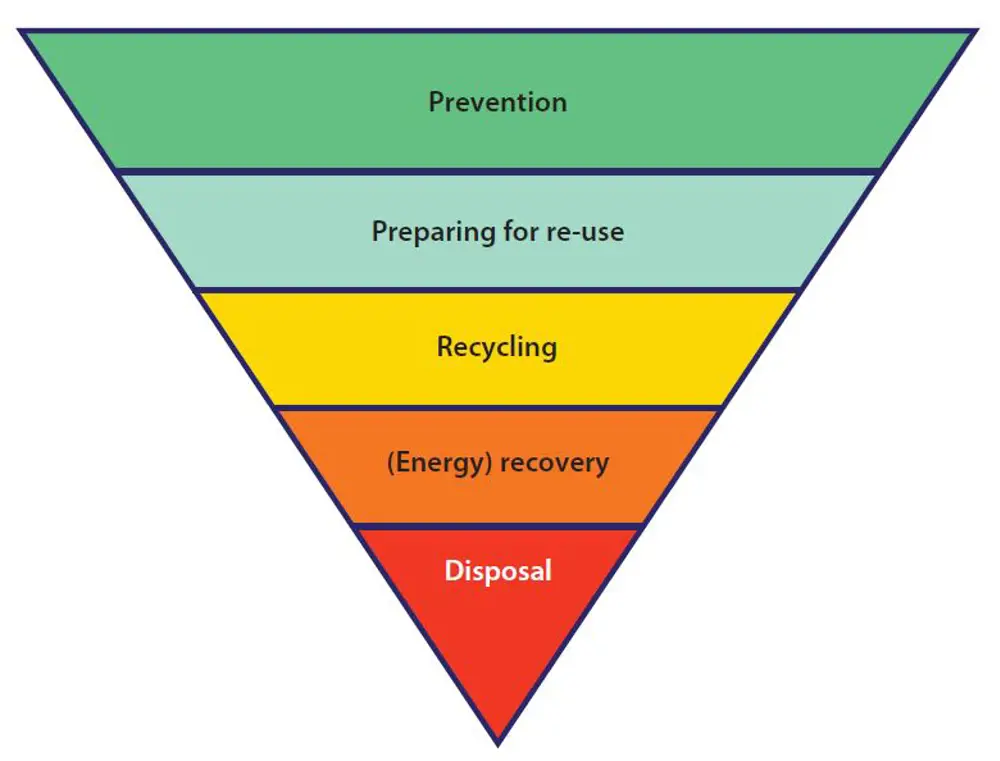
This waste hierarchy pyramid shows where preventing waste arising in the first place is the ideal, and landfill is the last resort for managing waste
In the past, landfill mining has been limited because of the economic challenges involved. To excavate, sort, make safe, and rebury usually outweighs the potential income – it only works financially when the there is a premium on the reclaimed land or the need to render the land environmentally safe.
Now, there are several projects across Europe establishing the possibilities and viability of enhanced landfill mining (ELFM). One of the leading figures researching this area in the UK is Dr Stuart Wagland, Senior Lecturer in Energy and Environmental Chemistry, School of Water, Energy and Environment at Cranfield University. He says: “We have been working with colleagues in Europe on ELFM, which considers landfill sites as a resource, banks of material that we will one day tap into. The ELFM model is not just about reclaiming land – ‘traditional’ landfill mining – it is about recovering materials and energy and ensuring that there is no long-term environmental damage. Now we need to make sure that the economics add up via cost-benefit analysis.
Up until now, few of the nearly 100 documented projects launched worldwide have made it past a feasibility demonstration, pilot or lab-scale venture. However, the biggest ELFM project in the world has begun in earnest at Remo, a recently closed modern landfill site 60 miles east of Brussels. Group Machiels, a specialist landfill contractor, has already worked on the 50 metre-deep site containing 18 million tonnes of household and industrial waste to stabilise the environment and avoid gas emissions.
The company estimates that half of the waste can be recovered using onsite recycling plants to separate out metals, paper, card, and plastics. There is special potential in electronic goods such as old TVs or computers that typically have higher concentrations of gold and rare earth elements per tonne than are found naturally in ore.
The remaining waste would be turned into a refuse-derived fuel suitable for thermal conversion into energy. One such idea has been to use gasification with plasma gas cleaning to produce energy-rich synthetic gas (syngas) and a vitrified residue. The syngas will be used to produce methane or hydrogen, while the vitrified residue can be used for producing cement and construction materials. Another option explored by Cranfield University is to convert excavated plastic into liquid fuels and chemicals through a pyrolysis process (thermal decomposition).
it could provide power for 200,000 homes over the next 20 years before turning the site into a nature park
This is a long-term project. Group Machiels thinks it could provide power for 200,000 homes over the next 20 years before turning the site into a nature park.
Proponents of ELFM would rather mine landfills than use energy to mine more virgin materials. Dr Wagland would like to have a Remo-type project to work on in the UK. His Cranfield University team has identified 850 old landfill sites that have high energy and materials possibilities in the UK. The university has assembled a network of landfill managers, engineers and developers to make ELFM a reality in the UK.
Circular Economy
🗑️ Recovering valuable metals from closed landfills to meet global demand
Due to the significant number of landfill sites across the UK, ELFM is a key component of critical material security and will contribute to the circular economy. Enhanced landfill mining recovers valuable raw materials and reintroduces them into the manufacturing chain.
At an EU level, the Interreg REGENERATIS project aims to recover valuable metals from former metallurgy sites and closed landfills. Previous work carried out by Cranfield University analysed several samples collected from four different closed UK landfill sites. The samples were prepared to separate the soil-like element, which comprises at least 60% of the material within a closed landfill site, from the rest of the waste. The study observed significant value in the metals it contained, highlighting the potential for closed landfills to contribute to the circular economy through ELFM projects. From just the four sites studied, there was around £104 million in platinum group metals; £280 million in aluminium and copper; £10 million in lithium; and £6.4 million in neodymium.
The recovery of these elements is critical for the sustainability of several industries. The global demand for lithium is expected to double between now and 2024 because of its important role in energy storage, particularly in electric vehicles. The UK is committed to banning the sales of new petrol and diesel cars by 2030, which is likely to boost the demand even further. Other critical metals include arsenic, which is predicted to run out sometime in the next five to 50 years, nickel and platinum group metals. Evidently, ELFM has a role to play in the UK’s resilience for critical resources and reclamation of critical raw materials from closed landfill sites.
A closed-loop economy to protect the environment
All the big recycling and waste providers in the UK refer to the waste hierarchy pyramid where prevention is the preferred option for waste, and disposal (landfill) is the worst. In an ideal closed-loop economy model, goods would be shared, leased, reused, repaired, refurbished, or recycled.
In practice, a circular economy means keeping waste to a minimum. That is what many of today’s waste practitioners and researchers are aiming for. They want to ensure that when a product reaches the end of its life, its materials are kept within the economy wherever possible so that they can be productively used again and again, thereby protecting the environment and creating further value.
***
This article has been adapted from "Life after landfills", which originally appeared in the print edition of Ingenia 86 (March 2021).
Contributors
Dr Adam Read is a respected 'waste management' academic and consultant with over 21 years of sector experience both in the UK and overseas. At the time of writing he was the External Affairs Director at SUEZ Recycling and Recovery UK, before becoming the Chief Sustainability Officer.
Gerry Cavanagh is an experienced professional with 23.2 years of work experience in environmental management systems, waste management, and hazardous waste management. He is a Regional Manager in the South for Landfill Energy at SUEZ Recycling and Recovery UK.
David Field had a varied 24-year career in the Royal Navy as a Marine Engineering Manager and has since been involved with the operations and maintenance of Energy Recovery Facilities (ERFs). He is now Head of Engineering for Viridor, one of the largest ERF fleets in the UK.
Dr Stuart Wagland is a waste management professional, applying his background in chemistry to understanding waste characteristics, developing novel analysis techniques and recovering value form waste materials. He is reader in Energy & Environmental Chemistry at Cranfield University and Deputy Director of Research, School of Water, Energy and Environment, at Cranfield University.
Keep up-to-date with Ingenia for free
SubscribeRelated content
Environment & sustainability
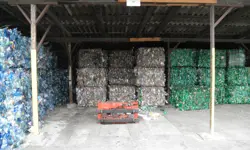
Recycling household waste
The percentage of waste recycled in the UK has risen rapidly over the past 20 years, thanks to breakthroughs in the way waste is processed. Find out about what happens to household waste and recent technological developments in the UK.
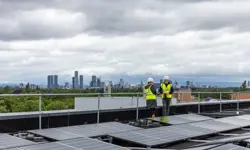
Upgrade existing buildings to reduce emissions
Much of the UK’s existing buildings predate modern energy standards. Patrick Bellew of Atelier Ten, a company that pioneered environmental innovations, suggests that a National Infrastructure Project is needed to tackle waste and inefficiency.

An appetite for oil
The Gobbler boat’s compact and lightweight dimensions coupled with complex oil-skimming technology provide a safer and more effective way of containing and cleaning up oil spills, both in harbour and at sea.
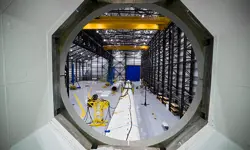
Future-proofing the next generation of wind turbine blades
Before deploying new equipment in an offshore environment, testing is vital and can reduce the time and cost of manufacturing longer blades. Replicating the harsh conditions within the confines of a test hall requires access to specialist, purpose-built facilities.
Other content from Ingenia
Quick read

- Environment & sustainability
- Opinion
A young engineer’s perspective on the good, the bad and the ugly of COP27

- Environment & sustainability
- Issue 95
How do we pay for net zero technologies?
Quick read

- Transport
- Mechanical
- How I got here
Electrifying trains and STEMAZING outreach

- Civil & structural
- Environment & sustainability
- Issue 95